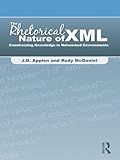Best PHP XML Parsing Tools to Buy in December 2025
Parsing XML with PHP involves reading and extracting information from an XML document using PHP programming language. XML (eXtensible Markup Language) is a standard format for storing and exchanging data.
To parse XML with PHP, you can use the DOM (Document Object Model) extension, which provides a set of classes for working with XML documents. Here's a step-by-step explanation:
- Loading the XML document: Create a new instance of the DOMDocument class. Use the load() or loadXML() method to load the XML document from a file or string respectively.
- Navigating the XML structure: Access the root element of the XML document using $dom->documentElement. Traverse the XML document using various methods such as getElementsByTagName() or childNodes. Use the nodeValue property to retrieve the value of an XML element.
- Extracting data: Loop through the desired XML elements or use specific methods to retrieve information. Extract the required data using functions like getNodeValue(), getAttribute(), etc.
- Processing the data: Store the extracted data in variables or manipulate it for further processing. Perform any necessary data validations or transformations. Utilize the extracted data for your desired purpose, such as displaying it on a webpage or storing it in a database.
- Error handling: Use exception handling techniques to handle any potential errors or exceptions that may arise during parsing. Catch and handle errors using try-catch blocks or appropriate error handling mechanisms provided by PHP.
By following these steps, you can effectively parse XML documents using PHP and utilize the extracted data as needed in your PHP application.
What is the significance of character encoding in XML parsing with PHP?
Character encoding is crucial in XML parsing with PHP because it determines how textual data is encoded and represented within an XML document. PHP functions for XML parsing, such as simplexml_load_string() or DOMDocument::loadXML(), rely on the specified character encoding to interpret and process the XML correctly.
The significance of character encoding lies in the following aspects:
- Correctly interpreting XML data: XML documents can contain text from various languages and character sets. The character encoding helps PHP understand and interpret the characters accurately while parsing the XML.
- Preserving special characters: XML documents often include special characters like &, <, >, ", and '. These characters have reserved meanings in XML, and if not properly encoded, they can cause parsing errors or misinterpretation of data. Specifying the correct character encoding ensures that these special characters are preserved and treated as intended.
- Data integrity and consistency: Different character encodings may represent the same character differently. For instance, ASCII encoding might not support non-English characters, whereas UTF-8 encoding can represent a wide range of characters. By specifying the correct character encoding, PHP ensures data integrity and consistency when parsing XML documents with various character sets.
- Handling multilingual content: XML documents can contain content in different languages, which may require different character encodings. By using the appropriate character encoding, PHP can handle multilingual content, preserving language-specific characters and ensuring accurate parsing and processing.
In summary, character encoding is essential in XML parsing with PHP as it allows for the correct interpretation and handling of textual data within XML documents, ensuring data integrity, consistency, and support for a wide range of languages and special characters.
How to parse XML fragments in PHP?
To parse XML fragments in PHP, you can utilize the SimpleXMLElement class. Here's an example of how you can do it:
- First, create a SimpleXMLElement object by passing the XML fragment to its constructor:
$xmlFragment = "Sample TitleSample Description"; $xml = new SimpleXMLElement($xmlFragment);
- Now, you can access various elements and attributes within the XML fragment by using the object's properties and methods. For example, to access the title and description elements:
$title = $xml->title; $description = $xml->description; echo "Title: " . $title . ""; echo "Description: " . $description . "";
- You can also loop through multiple child elements or retrieve their attributes. For instance, if your XML fragment has multiple item elements:
foreach ($xml->children() as $item) { $title = $item->title; $description = $item->description; echo "Title: " . $title . ""; echo "Description: " . $description . ""; }
Note that in this example, we are assuming a single XML fragment containing multiple item elements.
By using the SimpleXMLElement class, you can easily parse XML fragments and retrieve the desired values from their elements and attributes in PHP.
What is XML parsing with PHP?
XML parsing with PHP refers to the process of interpreting and extracting data from an XML document using PHP programming language. It involves reading the XML file, accessing its elements, and retrieving relevant information.
PHP provides various built-in functions and libraries for XML parsing, such as SimpleXML, DOMDocument, and XMLReader. These tools allow developers to load and parse XML data, navigate through its structure, and extract required data for further processing.
XML parsing with PHP involves the following steps:
- Load the XML file: The first step is to load the XML file into memory using appropriate PHP functions or libraries. For example, SimpleXML's simplexml_load_file() function or DOMDocument's load() method can be used for this purpose.
- Parse the XML data: Once the XML file is loaded, the PHP parser can traverse and interpret the XML data. Different XML parsing libraries offer different methods to access and manipulate the XML elements.
- Access XML elements: Developers can access XML elements based on their hierarchical structure, tag names, attributes, or search queries. PHP provides methods like getElementByTagName(), xpath() or simplexml_load_string() to access the desired XML elements.
- Retrieve data: Extracting data from XML involves accessing the desired elements and retrieving their content. PHP provides different methods to extract element values, attributes, or specific data nodes.
- Process data: After retrieving the required data, PHP allows developers to perform further processing, such as storing data in a database, generating reports, or integrating it with other systems.
XML parsing with PHP is commonly used in various scenarios, such as reading and processing XML-based APIs, parsing RSS feeds, importing/exporting data from/to XML files, and working with web services that utilize XML for data exchange.



